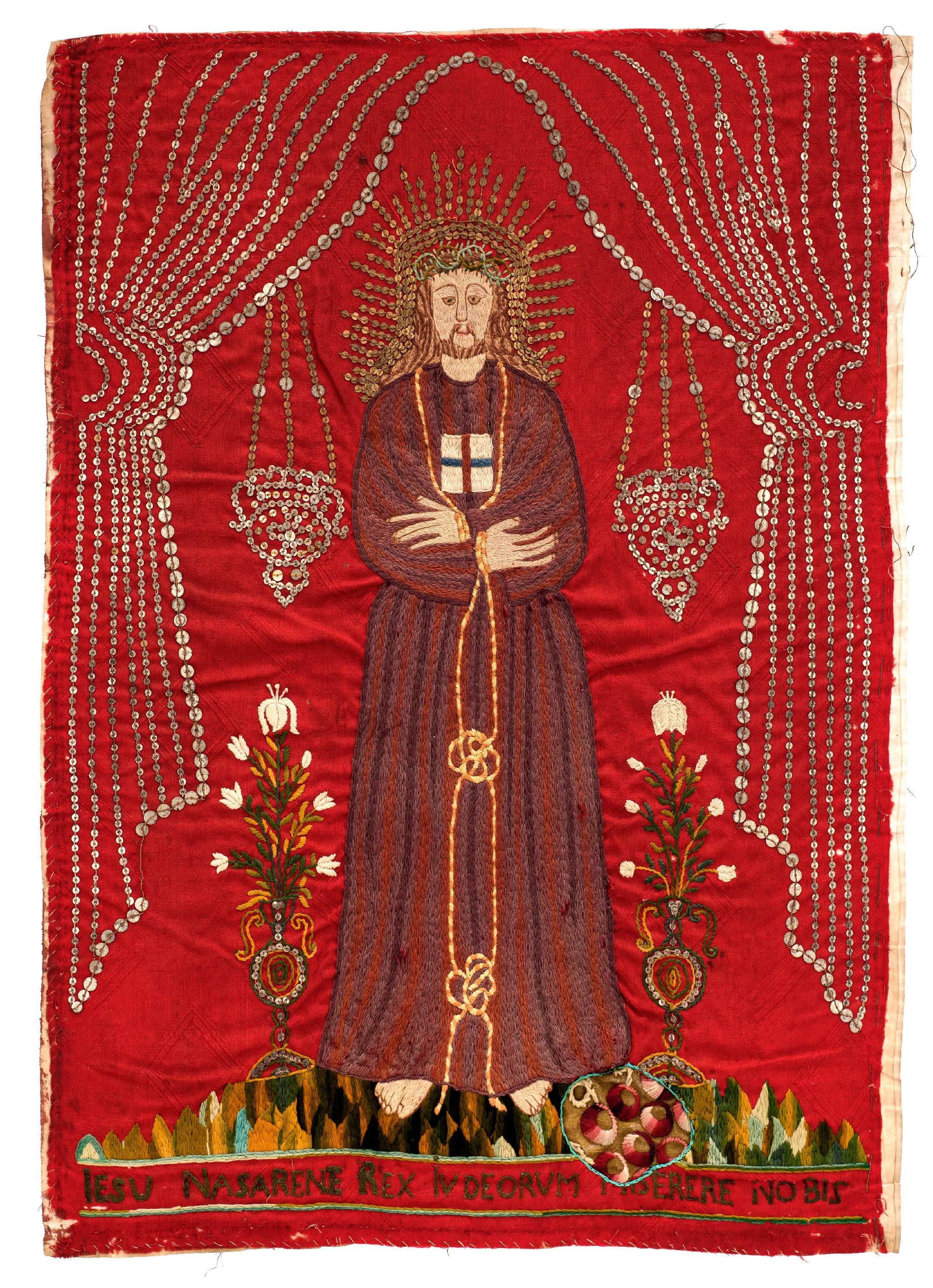
Part of the process flag.
Lithuania, late 19th c.
Church of the Assumption of the Blessed Virgin Mary in Turgeliai.
19th c. Professional versus amateur
The 19th century is characterized by a large variety of styles and techniques. In Lithuania, the persisting tradition of Baroque was reflected in the decoration of liturgical vestments, and the impact of the mid-century Gothic revival in Europe was hardly felt. The back orphrey of chasubles often acquired the form of a cross. Medallions with Christograms, images of saints or the Lamb of God were placed at the intersection of the cross.
Liturgical textiles for altar and church decoration
Sets of liturgical vestments were often supplemented by sumptuous textile implements of the altar. The veil and burse are coverings that conceal the chalice of the Holy Mass at certain moments in the liturgy. Antependia decorating the frontal part of the mensa were made from expensive materials: silk, brocade and velvet, and were embroidered with gold and silver threads and decorated with appliqué and painting.
Other embroidery techniques
The procession flag is embroidered in a mixed technique using metal and silk threads, straight and chain stitches, and decorated with metal plates of golden colour. Woollen threads are used instead of sumptuous silk. Nineteenth-century embroideries in Lithuania often reflect the continued traditions of Baroque with deep roots in folk art.
Images of Christ and scenes from the Gospel
Jesus of Nazareth is in the centre of the procession flag. Arrested, with tied hands and a purple robe put on him by mocking soldiers, Christ is represented at full length, with a crown of thorns on his head. The Latin inscription below reads: “Jesus of Nazareth, King of the Jews, have mercy on us”.
